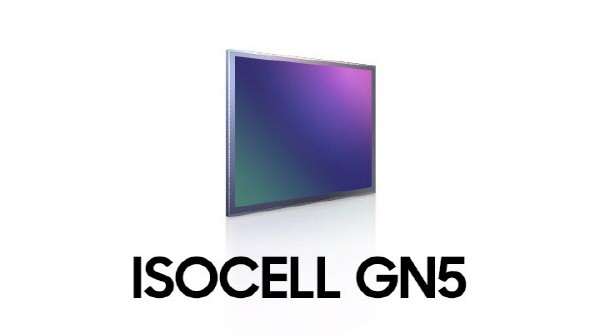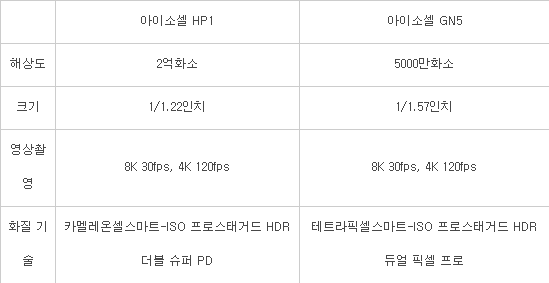Samsung Electronics surpassed the '200 million pixel' for mobile image sensors for the first time. Two years after developing the world's first 100-megapixel image sensor, it succeeded in doubling the number of pixels, proving its significantly advanced technology again. Samsung Electronics also unveiled the smallest product among the dual pixel image sensors. Samsung Electronics was evaluated for securing the technology to lead the next-generation mobile camera trend. It has secured leadership in the rapidly growing ultra-high-pixel image sensor market as Samsung opens up the industry's first 200-megapixel image sensor era.

On the 2nd, Samsung Electronics unveiled the world's first 200 million pixel mobile image sensor 'ISOCELL HP1' and the industry's smallest dual pixel image sensor 'ISOCELL GN5.’ ISOCELL HP1 is an image sensor that implements 200 million 0.64 micrometer (㎛) pixels in the size of 1/1.22 inches. The number of pixels increased by 85% compared to the existing 108 million-pixel product by using ultra-small ㎛pixels, while the size of the optical format, which is the image recognition area, was minimized.
Samsung Electronics released the world's first image sensor with over 100 million pixels in August 2019. The product has been applied to smartphones such as the Galaxy S20 Ultra, Xiaomi, Lenovo and Motorola.By unveiling a new 200-megapixel product, Samsung Electronics has renewed its own maximum pixel count for mobile image sensors. Deok-hyun Jang, Vice President of Samsung Electronics' System LSI Business Unit, said, "Samsung Electronics is securing unrivaled technology to overcome the technical difficulties for high-sensitivity shooting in ultra-small image sensors. The high-pixel ISOCELL HP1 that went beyond the limits and the ISOCELL GN5 equipped with a higher-level autofocus function are innovative products that will lead the camera trend in next-generation mobile devices.”

Samsung Electronics' proprietary new technology 'Chameleon Cell' was applied for the first time as well. The device can adjust its light receiving area by combining 4 to 16 adjacent pixels depending on the shooting environment. 0.64㎛fine pixel is used where the light is received sufficiently, the light receiving area is widened to 1.28㎛ or 2.56㎛pixel to obtain a bright and clear image in the dark.

The ISOCELL GN5, which Samsung Electronics unveiled together with ISOCELL HP1, is the industry’s smallest size with 1/1.57-inch optical format dual-pixel image sensor of 50 megapixels. The dual pixel is equipped with two photodiodes in every pixel, which allows a sensor pixel to focus and receive color information simultaneously. It implements fast and accurate autofocus without compromising image quality. This product overcomes the limitation of using only the left and right phase difference for auto focusing of the existing dual pixels. The autofocus performance is further enhanced by utilizing all of the top/bottom/left/right phase difference.
According to market researcher TSR, it is expected that 52 million image sensors with 100 million pixels or more will be installed in the camera this year. It is expected to increase to 160 million by 2025 and record an annual average growth rate of 32.4% (based on quantity).
[Product specifications]

By Staff Reporter Dong-jun Kwon (djkwon@etnews.com)